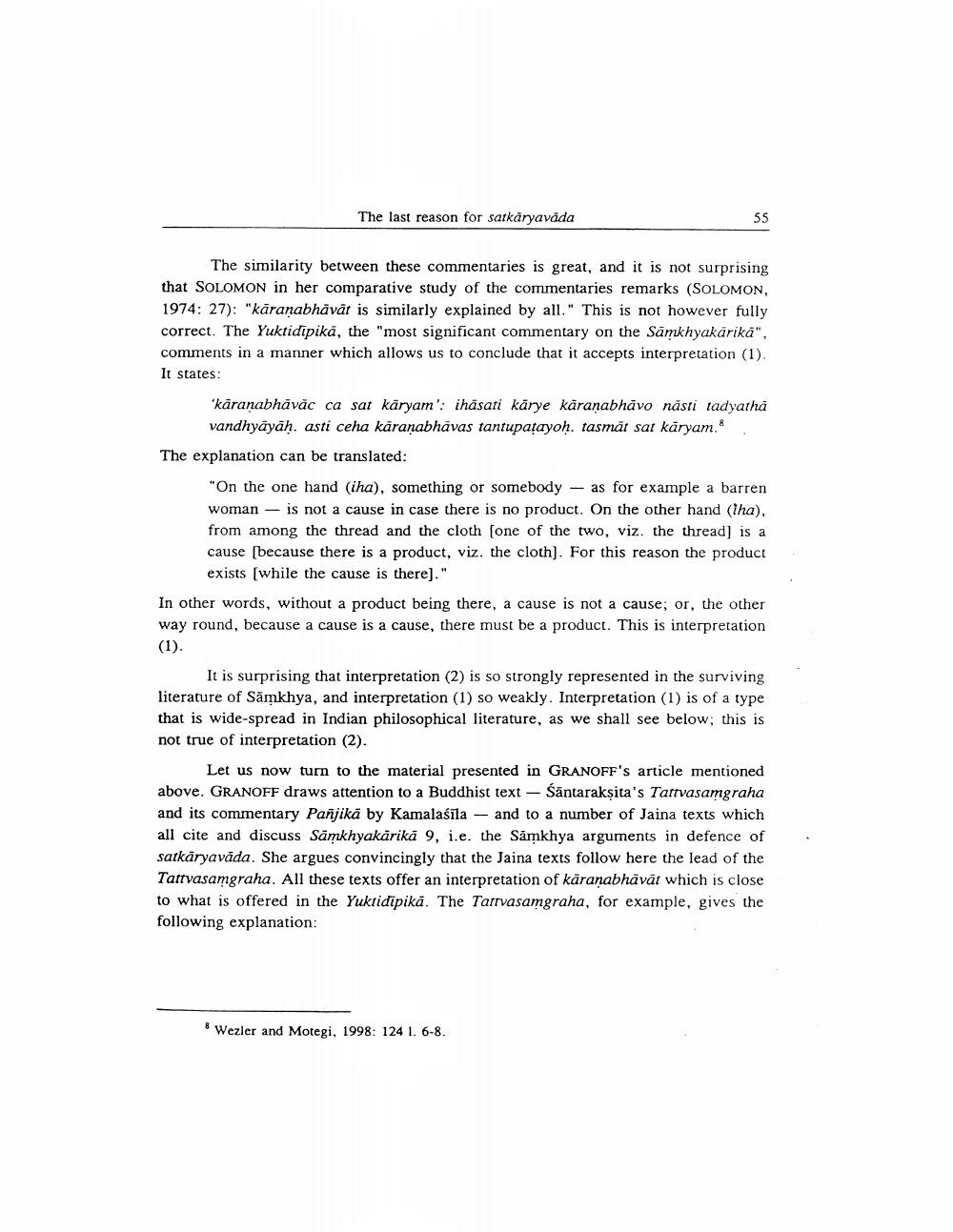________________
The last reason for satkāryavada
The similarity between these commentaries is great, and it is not surprising that SOLOMON in her comparative study of the commentaries remarks (SOLOMON, 1974: 27): "kāranabhāvāt is similarly explained by all." This is not however fully correct. The Yuktidipikā, the "most significant commentary on the Samkhyakarikā", comments in a manner which allows us to conclude that it accepts interpretation (1). It states:
karanabhāvāc ca sat käryam': ihasati karye karanabhāvo nästi tadyatha
vandhyāyāḥ. asti ceha karanabhāvas tantupatayoḥ. tasmāt sat kāryam. The explanation can be translated:
"On the one hand (iha), something or somebody - as for example a barren woman - is not a cause in case there is no product. On the other hand (iha), from among the thread and the cloth (one of the two, viz. the thread] is a cause (because there is a product, viz. the cloth). For this reason the product
exists (while the cause is there)." In other words, without a product being there, a cause is not a cause; or, the other way round, because a cause is a cause, there must be a product. This is interpretation (1).
It is surprising that interpretation (2) is so strongly represented in the surviving literature of Sāmkhya, and interpretation (1) so weakly. Interpretation (1) is of a type that is wide-spread in Indian philosophical literature, as we shall see below; this is not true of interpretation (2).
Let us now turn to the material presented in GRANOFF's article mentioned above. GRANOFF draws attention to a Buddhist text - Santarakṣita's Tattvasamgraha and its commentary Pañjika by Kamalaśīla — and to a number of Jaina texts which all cite and discuss Samkhyakarika 9, i.e. the Samkhya arguments in defence of satkāryavāda. She argues convincingly that the Jaina texts follow here the lead of the Tattvasamgraha. All these texts offer an interpretation of karanabhāvāt which is close to what is offered in the Yuktidipika. The Tattvasamgraha, for example, gives the following explanation:
* Wezler and Motegi, 1998: 124 1. 6-8.




